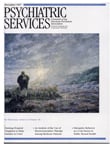A History of Psychiatry: From the Era of the Asylum to the Age of Prozac
This is the right time for this new book, a social history of psychiatry that examines changing attitudes toward mental illness, the contributors to the changes, and the advances in clinical practice. Edward Shorter's history admirably meets these objectives. It is interesting, clear, and lively, and it answers the question "Why did the change occur?" In providing answers, the author is often opinionated and controversial. He is certain to get your attention and to make you think.
The author has impressive credentials. He is the Hannah professor of the history of medicine at the University of Toronto. He has written several books on such medical topics as the modern family, bedside manners, women's bodies, and psychosomatic illness.
Shorter develops his history of psychiatry in eight chapters. Some of the highlights are outlined here.
The birth of psychiatry. Johann Reil coined the word "psychiatry" in 1816. The mad were cared for by their families, and jails took over when the family couldn't handle them. Monasteries and almshouses helped out when there was no family.
The asylum era. One reason for the growth in numbers of patients in the asylums, Shorter says, was the admission of those who were already mad but had previously been cared for by families and almshouses. The author also writes about the handling of patients in the asylums, and why the asylum failed.
The first biological psychiatry. Research and teaching in psychiatry were dominated by the Germans for 100 years, until 1933. The individuals who left their names on signs and syndromes are discussed. The reader can discover why Kraepelin and not Freud was the dominant historical figure.
Nerves. In the second half of the 19th century, nerves, nervousness, and neurasthenia offered an escape from the asylum. Shorter describes how the spa became fashionable for psychiatric conditions, and he discusses the impact of Weir Mitchell's "rest cure."
The psychoanalytic hiatus. This chapter covers the roots of Freudian concepts and how psychoanalysis made it possible to wrest treatment of patients from the neurologists. The author believes Freud was a disaster.
Alternatives. Discussed here is the evolution of therapy for neurosyphilis, insulin coma therapy, lobotomy, and electroshock. The reader learns why the author thinks "the subject of community psychiatry in the United States was, and remains, a kind of grotesque joke."
The second biological psychiatry. This chapter begins with the antecedents, such as early genetic studies, of the second biological psychiatry, which burst forth in the 1970s. By 1995 a gene defect in schizophrenia was tentatively located on chromosome 6. Research on the brain and the discovery of neurotransmitters are discussed. The excitement caused by chlorpromazine and the many drugs that followed is a fascinating account. The chapter also describes the rise of antipsychiatry and ends with the controversy over electroconvulsive therapy.
From Freud to Prozac. Shorter notes that the end of the 20th century saw a new tendency for people "to psychologize distress, rather than to medicalize it," which increases the demand for psychologic therapy. Also evident is the extension of the boundary of what constitutes depression. Prozac is the drug that makes people feel better.
Also discussed here is the recognition of the need for a reliable classification of diagnoses so what some scientists say means the same to all scientists. The chapter covers early DSM s, John Feighner's criteria published in 1972, DSM-III and DSM-III-R with Robert Spitzer, and the continuing evolution with DSM-IV.
Edward Shorter's A History of Psychiatry is recommended reading for all psychiatrists and mental health professionals. The curious will discover the author's perception of the role of drug companies in creating a demand for their product, his view of why asylums were formed and why they failed, and why he thinks psychoanalysis and Freudian concepts were a disaster that slowed the discovery of neuroscience.
The book is must reading for all who have an interest in medical history. Shorter tells a most readable story of change and development over 200 years.
Dr. Barton is professor of psychiatry emeritus at Dartmouth Medical School in Hanover, New Hampshire. He is a past-president and former medical director of the American Psychiatric Association.



